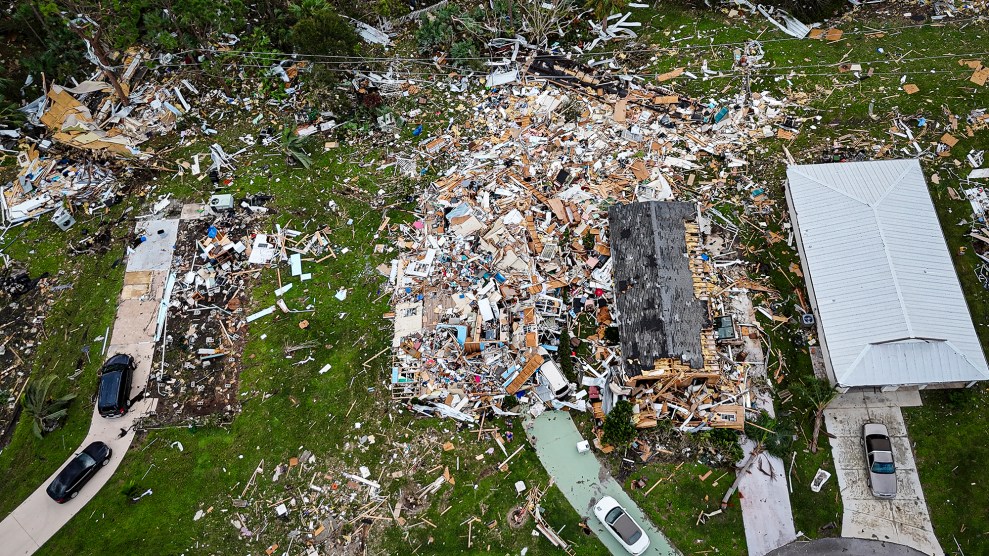
The Great Afghan Bailout
It’s Time to Change Names, Switch Analogies
By Tom Engelhardt
Let’s start by stopping.
It’s time, as a start, to stop calling our expanding war in Central and South Asia “the Afghan War” or “the Afghanistan War.” If Obama’s special representative to Afghanistan and Pakistan Richard Holbrooke doesn’t want to, why should we? Recently, in a BBC interview, he insisted that “the ‘number one problem’ in stabilizing Afghanistan was Taliban sanctuaries in western Pakistan, including tribal areas along the Afghan border and cities like Quetta” in the Pakistani province of Baluchistan.
And isn’t he right? After all, the U.S. seems to be in the process of trading in a limited war in a mountainous, poverty-stricken country of 27 million people for one in an advanced nation of 167 million, with a crumbling economy, rising extremism, advancing corruption, and a large military armed with nuclear weapons. Worse yet, the war in Pakistan seems to be expanding inexorably (and in tandem with American war planning) from the tribal borderlands ever closer to the heart of the country.
These days, Washington has even come up with a neologism for the change: “Af-Pak,” as in the Afghanistan-Pakistan theater of operations. So, in the name of realism and accuracy, shouldn’t we retire “the Afghan War” and begin talking about the far more disturbing “Af-Pak War”?
And while we’re at it, maybe we should retire the word “surge” as well. Right now, as the Obama plan for that Af-Pak War is being “rolled out,” newspaper headlines have been surging when it comes to accepting the surge paradigm. Long before the administration’s “strategic review” of the war had even been completed, President Obama was reportedly persuaded by former Iraq surge commander, now CentCom commander, General David Petraeus to “surge” another 17,000 troops into Afghanistan, starting this May.
For the last two weeks, news has been filtering out of Washington of an accompanying civilian “surge” into Afghanistan (“Obama’s Afghanistan ‘surge’: diplomats, civilian specialists”). Oh, and then there’s to be that opium-eradication surge and a range of other so-called surges. As the headlines have had it: “1,400 Isle Marines to join Afghanistan surge,” “U.S. troop surge to aid Afghan police trainers,” “Seabees build to house surge,” “Afghan Plan Detailed As Iraq Surge ‘Lite,'” and so on.
It seems to matter little that even General Petraeus wonders whether the word should be applied. (“The commander of the U.S. Central Command said Friday that an Iraq-style surge cannot be a solution to the problems in Afghanistan.”) There are, however, other analogies that might better capture the scope and nature of the new strategic plan for the Af-Pak War. Think bailout. Think A.I.G.
The Costs of an Expanding War
In truth, what we’re about to watch should be considered nothing less than the Great Afghan (or Af-Pak) bailout.
On Friday morning, the president officially rolled out his long-awaited “comprehensive new strategy for Afghanistan and Pakistan,” a plan without a name. If there was little news in it, that was only because of the furious leaking of prospective parts of it over the previous weeks. So many trial balloons, so little time.
In a recent “60 Minutes” interview (though not in his Friday announcement), the president also emphasized the need for an “exit strategy” from the war. Similarly, American commander in Afghanistan, General David McKiernan, has been speaking of a possible “tipping point,” three to five years away, that might lead to “eventual departure.” Nonetheless, almost every element of the new plan—both those the president mentioned Friday and the no-less-crucial ones that didn’t receive a nod—seem to involve the word “more”; that is, more U.S. troops, more U.S. diplomats, more civilian advisors, more American and NATO military advisors to train more Afghan troops and police, more base and outpost building, more opium-eradication operations, more aid, more money to the Pakistani military—and strikingly large-scale as that may be, all of that doesn’t even include the “covert war,” fought mainly via unmanned aerial vehicles, along the Pakistani tribal borderlands, which is clearly going to intensify.
In the coming year, that CIA-run drone war, according to leaked reports, may be expanded from the tribal areas into Pakistan’s more heavily populated Baluchistan province where some of the Taliban leadership is supposedly holed up. In addition, so reports in British papers claim, the U.S. is seriously considering a soft coup-in-place against Afghan President Hamid Karzai. Disillusioned with the widespread corruption in, and inefficiency of, his government, the U.S. would create a new “chief executive” or prime ministerial post not in the Afghan constitution—and then install some reputedly less corrupt (and perhaps more malleable) figure. Karzai would supposedly be turned into a figurehead “father of the nation.” Envoy Holbrooke has officially denied that Washington is planning any such thing, while a spokesman for Karzai denounced the idea (both, of course, just feeding the flames of the Afghan rumor mill).
What this all adds up to is an ambitious doubling down on just about every bet already made by Washington in these last years—from the counterinsurgency war against the Taliban and the counter-terrorism war against al-Qaeda to the financial love/hate relationship with the Pakistani military and its intelligence services underway since at least the Nixon years of the early 1970s. (Many of the flattering things now being said by U.S. officials about Pakistani Chief of the Army Staff General Ashfaq Pervez Kayani, for instance, were also said about the now fallen autocrat Pervez Musharraf when he held the same position.)
Despite that mention of the need for an exit strategy and a presidential assurance that both the Afghan and Pakistani governments will be held to Iraqi-style “benchmarks” of accountability in the period to come, Obama’s is clearly a jump-in-with-both-feet strategy and, not surprisingly, is sure to involve a massive infusion of new funds. Unlike with A.I.G., where the financial inputs of the U.S. government are at least announced, we don’t even have a ballpark figure for how much is actually involved right now, but it’s bound to be staggering. Just supporting those 17,000 new American troops already ordered into Afghanistan, many destined to be dispatched to still-to-be-built bases and outposts in the embattled southern and eastern parts of the country for which all materials must be trucked in, will certainly cost billions.
Recently, the Washington Post’s Walter Pincus dug up some of the construction and transportation costs associated with the war in Afghanistan and found that, as an employer, the U.S. Army Corps of Engineers comes in second only to the Afghan government in that job-desperate country. The Corps is spending about $4 billion this year alone on road-building activities, and has slated another $4-$6 billion for more of the same in 2010; it has, according to Pincus, already spent $2 billion constructing facilities for the expanding Afghan army and police forces, and has another $1.2 billion set aside for more such facilities this year. It is also likely to spend between $400 million and $1.4 billion on as many as six new bases, assorted outposts, and associated air fields American troops will be sent to in the south.
 Throw in hardship pay, supplies, housing, and whatever else for the hundreds of diplomats and advisors in that promised “civilian surge”; add in the $1.5 billion a year the president promised in economic aid to Pakistan over the next five years, a tripling of such aid (as urged by Vice President Biden when he was still a senator); add in unknown amounts of aid to the Pakistani and Afghan militaries. Tote it up and you’ve just scratched the surface of Washington’s coming investment in the Af-Pak War. (And lest you imagine that these costs might, at least, be offset by savings from Obama’s plan to draw down American forces in Iraq, think again. A recent study by the Government Accountability Office suggests that “Iraq-related expenditures” will actually increase “during the withdrawal and for several years after its completion.”)
Throw in hardship pay, supplies, housing, and whatever else for the hundreds of diplomats and advisors in that promised “civilian surge”; add in the $1.5 billion a year the president promised in economic aid to Pakistan over the next five years, a tripling of such aid (as urged by Vice President Biden when he was still a senator); add in unknown amounts of aid to the Pakistani and Afghan militaries. Tote it up and you’ve just scratched the surface of Washington’s coming investment in the Af-Pak War. (And lest you imagine that these costs might, at least, be offset by savings from Obama’s plan to draw down American forces in Iraq, think again. A recent study by the Government Accountability Office suggests that “Iraq-related expenditures” will actually increase “during the withdrawal and for several years after its completion.”)
Put all this together and you can see why the tactical word “surge” hardly covers what’s about to happen. The administration’s “new” strategy and its “new” thinking—including its urge to peel off less committed Taliban supporters and reach out for help to regional powers—should really be re-imagined as but another massive attempted bailout, this time of an Afghan project, now almost 40 years old, that in foreign policy terms is indeed our A.I.G.
Graveyard Thinking
As Obama’s economic team overseeing the various financial bailouts is made up of figures long cozy with Wall Street, so his foreign policy team is made up of figures deeply entrenched in Washington’s national security state—former Clintonistas (including the penultimate Clinton herself), military figures like National Security Adviser General James Jones, and that refugee from the H.W. Bush era, Defense Secretary Robert Gates. They are classic custodians of empire. Like the economic team, they represent the ancien régime.
They’ve now done their “stress tests,” which, in the world of foreign policy, are called “strategic reviews.” They recognize that unexpected forces are pressing in on them. They grasp that the American global system, as it existed since the truncated American century began, is in danger. They’re ready to bite the bullet and bail it out. Their goal is to save what they care about in ways that they know.
Unfortunately, the end result is likely to be that, as with A.I.G., we, the American people, could end up “owning” 80% of the Af-Pak project without ever “nationalizing” it—without ever, that is, being in actual control. In fact, if things go as badly as they could in the Af-Pak War, A.I.G. might end up looking like a good deal by comparison.
The foreign policy team is no more likely to exhibit genuinely outside-the-box thinking than the team of Tim Geithner and Larry Summers has been. Their clear and desperate urge is to operate in the known zone, the one in which the U.S. is always imagined to be part of the solution to any problem on the planet, never part of the problem itself.
In foreign policy (as in economic policy), it took the Bush team less than eight years to steer the ship of state into the shallows where it ran disastrously aground. And yet, in response, after months of “strategic review,” this team of inside-the-Beltway realists has come up with a combination of Af-Pak War moves that are almost blindingly expectable.
In the end, this sort of thinking is likely to leave the Obama administration hostage to its own projects as well as unprepared for the onrush of the unexpected and unknown, whose arrival may be the only thing that can be predicted with assurance right now. Whether as custodians of the imperial economy or the imperial frontier, Obama’s people are lashed to the past, to Wall Street and the national security state. They are ill-prepared to take the necessary full measure of our world.
If you really want a “benchmark” for measuring how our world has been shifting on its axis, consider that we have all lived to see a Chinese premier appear at what was, in essence, an international news conference and seriously upbraid Washington for its handling of the global economy. That might have been surprising in itself. Far more startling was the response of Washington. A year ago, the place would have been up in arms. This time around, from White House Press Secretary Robert Gibbs (“There’s no safer investment in the world than in the United States…”) to the president himself (“Not just the Chinese government, but every investor can have absolute confidence in the soundness of investments in the United States…”), Washington’s response was to mollify and reassure.
Face it, we’ve entered a new universe. The “homeland” is in turmoil, the planetary frontiers are aboil. Change—even change we don’t want to believe in—is in the air.
In the end, as with the Obama economic team, so the foreign policy team may be pushed in new directions sooner than anyone imagines and, willy-nilly, into some genuinely new thinking about a collapsing world. But not now. Not yet. Like our present financial bailouts, like that extra $30 billion that went into A.I.G. recently, the new Obama plan is superannuated on arrival. It represents graveyard thinking.
A.I.G…
Af-Pak War…
R.I.P.
Tom Engelhardt, co-founder of the American Empire Project, runs the Nation Institute’s TomDispatch.com. He is the author of The End of Victory Culture, a history of the Cold War and beyond. He also edited The World According to TomDispatch: America in the New Age of Empire (Verso, 2008), an alternative history of the mad Bush years.
Copyright 2009 Tom Engelhardt
















